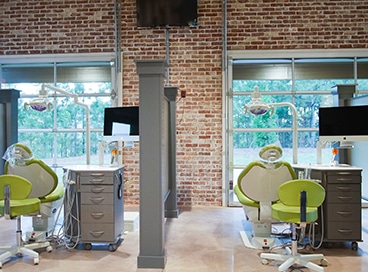The Facts About Orthodontics Revealed
Table of ContentsNot known Details About Orthodontics The Only Guide to OrthodonticsOrthodontics Can Be Fun For AnyoneSome Of OrthodonticsExamine This Report about OrthodonticsThe Only Guide for OrthodonticsUnknown Facts About Orthodontics
You might feel some discomfort for some time when your dental braces are initially placed on and when they are changed. It will take a little time to get used to your dental braces and they can trouble your lips and cheeks - Orthodontics. If this happens, an alleviation wax can be put on your dental bracesIt is necessary to comb your dental braces along with the front, back and eating surface areas of the teeth. Your dentist or orthodontist will certainly give you tips on how to brush and on how to floss using floss threaders. After flossing, roll it up in a tiny round and placed it in the waste.
Parents should manage their youngsters to ensure they do a good job cleansing their teeth and braces and follow the guidance of their dental practitioner or orthodontist. If you have braces, do not attack on tough things such as ice and nuts. Do not eat the ends of pens or pencils.
All about Orthodontics
Troubles that are not fixed can trigger the therapy to last longer. The typical metal braces, there are tooth-coloured ceramic dental braces that are much less visible. Dental braces and elastics can also be multicoloured.
It guides the instructions of tooth activity and jaw development in someone who is still expanding. There are various kinds of headwear and they may be used throughout any component of the orthodontic treatment. Your orthodontist or dental practitioner will show you exactly how to place on the headgear and inform you just how lengthy to use it each day.
4 Simple Techniques For Orthodontics
They may need to be worn regularly or part of the time. Tooth removal may be required if your teeth are crowded or if a tooth is severely out of position. Jaw surgical procedure (or orthognathic surgical procedure) might be needed when there are major differences in the size or position of the top and reduced jaws.
An orthodontist is a dental professional trained to diagnose, stop, and treat teeth and jaw abnormalities. They deal with existing conditions and are educated to determine issues that may create in the future. Orthodontists work with people of any ages, from youngsters to grownups. Individuals frequently associate official source a perfect smile with excellent health and wellness.
5 Easy Facts About Orthodontics Explained
Orthodontic residency programs provide extensive, concentrated instruction for dental professionals. They concentrate on two areas: Exactly how to properly and safely move teeth Just how to correctly direct advancement in the teeth, jaw, and faceOnce an orthodontist has actually finished training, they have the alternative to become board certified.
Indicators on Orthodontics You Should Know
Some individuals require a headgear to help move teeth right into line with stress from outside the mouth. A retainer is a custom-made gadget that keeps your teeth in area.
They're frequently made use of on kids. They can create added area in the mouth without having to draw teeth. If you have a significant underbite or overbite, you may need orthognathic surgery (additionally called orthodontic surgical treatment) to lengthen or reduce your jaw. Orthodontists utilize wires, medical screws, or plates to sustain your jaw bone.
Getting My Orthodontics To Work
Orthodontists may execute surgical procedure, exams,X-rays,and more to aid you achieve an extra comfy, healthier smile. An orthodontist is concentrated on your bite, so something like a damaged tooth would be managed by a dentist. Orthodontists are dental professionals yet not all dental professionals are orthodontists. Orthodontists are concentrated on your bite, or the way your teeth fit with each other, and the straightness of your teeth.
One of the indications of an attractive smile is a healthy and balanced collection of teeth and good oral health. Most people have actually gapped, misaligned, irregular teeth that can make them incomplete.
Orthodontics Fundamentals Explained
Orthodontic therapy is recognized for its capacity to change smiles, yet its advantages expand beyond plain appearances. Some of these advantages are: One of the significant orthodontic devices is that it initiates a transformative procedure beyond tooth alignment.

These modifications are critical for maintaining progression and making sure the therapy stays on track according to the well established strategy. Click Here The orthodontist develops a personalized treatment strategy based upon the diagnostic records and the individual's unique demands and choices. This strategy outlines the suggested activity to deal with the recognized orthodontic concerns and attain the desired result.